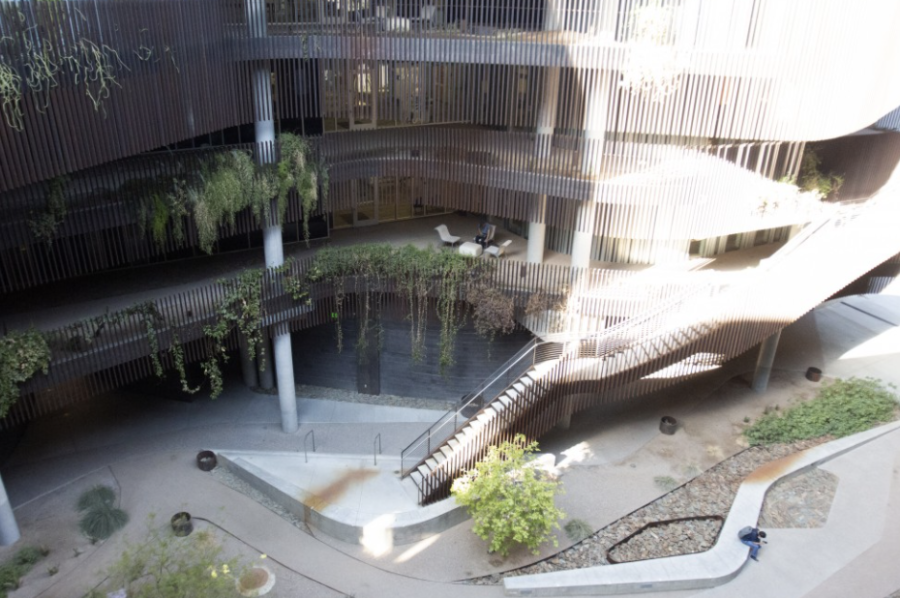The new project to add solar panels and a rooftop garden on the University of Arizona’s Environmental and Natural Resources 2 building is about to begin Phase Three.
The first meeting to discuss this project occurred in the fall semester of 2017. Phase One, which is the installation of the green roof, began in fall 2019 and was completed in Feb. 2020. Phase Two, which is the installation of the solar panels, began in the fall semester of 2020 and was completed in Jan. 2021. Phase Three, which is the active research, is expected to begin later this spring.
Trevor Ledbetter, the director of the Office of Sustainability, has the role to be a part of all the construction meetings and decisions. He helps to facilitate meetings around how to best incorporate research, student engagement and building needs.
“Our goal is to ensure that the project uses the campus as a living lab, bringing together research, student experiential opportunities and teaching into one site and on the most sustainable building on campus,” Ledbetter stated.
According to Ledbetter, the goal of the research phase is to determine how beneficial the co-location of the green roof and solar panels is here in southern Arizona. This leads to determining whether or not such a project might be worth replicating in the future. The researchers will be tracking plant establishment and growth, soil, air and solar panel temperatures.
According to Kirk Dimond, assistant professor of landscape architecture, their initial study is looking at plant establishment to see what differences may be observed in species diversity and rigor between plots in the full sun versus plots under the solar panels.
Dimond came up with what desert species to plant by consulting with an alumna-owned operation for seed supply and an application named Strategic Habitat Enhancements. Dimond and other members of the project have a desert restoration seed mix with over 30 native species that will be seeded to produce a diverse structure and pollinator habitat.
Dimond’s favorite part has been seeing the layering of systems and synergies of this multi-functional landscape.
“From the anticipated benefits of the plants cooling the panels and the panels providing protection to the plants, to the blend of research and ecological function in a highly visible social space on the roof of ENR2,” Dimond said.
Dimond explained that the COVID-19 precaution affected the construction timeline, but that they are eager to get the seeds in the soil very soon. Dimond also explained that it is challenging to put infrastructure like that on a roof six stories up.
RELATED: Arizona opens vaccine eligibility to residents 16 years of age and older
A crane was necessary to get all the materials on the roof, including the soil, panels and array structure. The existing structure of the building also played a factor in allowable weights. Near the columns, the soil could be deeper, but as people get closer to the canyon where it cantilevers, structural limitations require a shallow soil profile, Dimond explained.
“We saw this as an opportunity to compare depths as well, so we have plots with 4 inches of soil and some with 8 inches,” Dimond added.
The garden was part of the original plans for ENR2, but it was not completed when the building first opened, Dimond explained. With the help of the Office of Sustainability, President’s Office, TEP and others, enough support was given to finish it. Not only did they get enough support to finish the garden but with the support, they were also able to add solar panels.
“Green roofs have a lot of benefits in urban environments, such as slowing storm water runoff, cooling cities, adding habitat, etc., but they are difficult in our arid climate because of irrigation demands in a very harsh environment with wind and sun exposure beyond that at the ground level,” Dimond stated.
They anticipate that the solar canopy will provide a micro-climate that enhances the ability of the rooftop garden to thrive without excessive amounts of water for irrigation. In return, the evapotranspiration may cool the panels to enhance performance.
Follow Jillian Bartsch on Twitter









